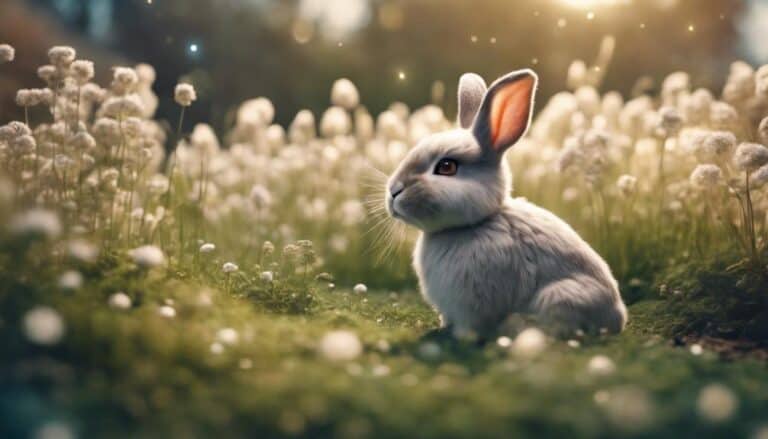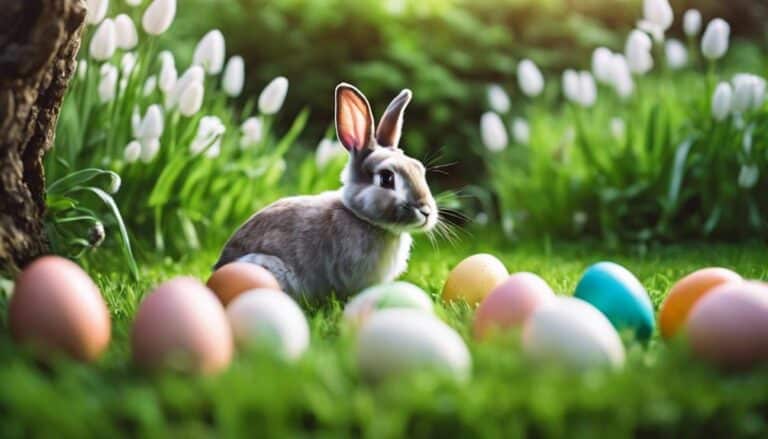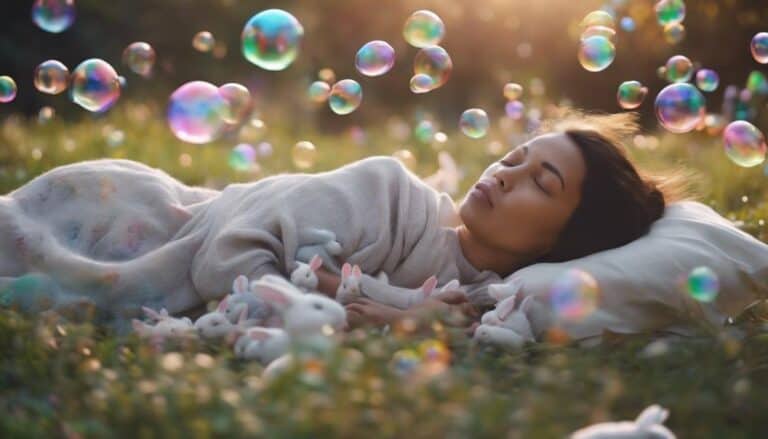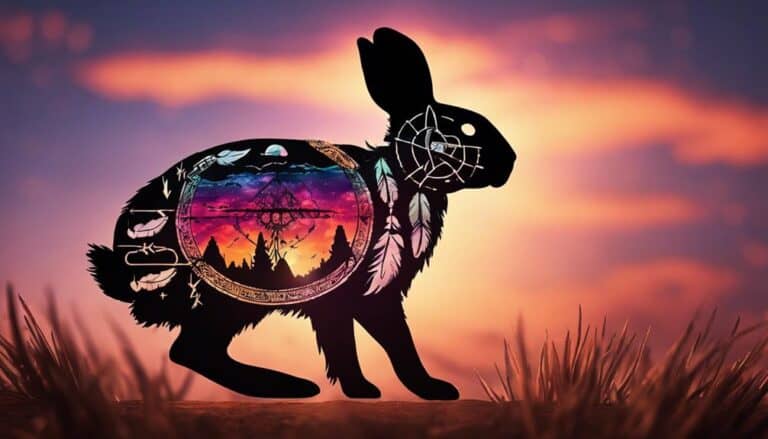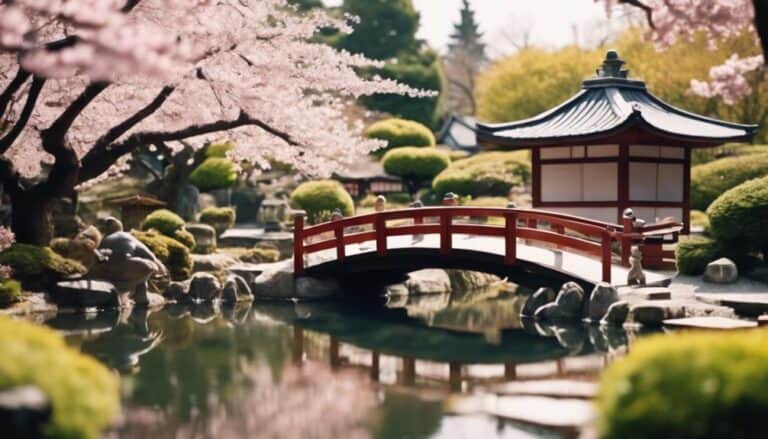Have you ever pondered why bunnies are linked to fertility and rebirth across cultures?
The connection goes beyond fluffy tails and cute hops, delving into ancient beliefs and symbolic interpretations that shed light on the enduring allure of these creatures.
From mythological ties to nature's cycles, the reasons behind bunnies' association with fertility and rebirth reveal intriguing insights into human perceptions of life, growth, and renewal.
Contents
- 1 Key Takeaways
- 2 Ancient Symbol of Fertility
- 3 Pagan Roots in Spring Celebrations
- 4 Significance in Easter Traditions
- 5 Connection to Goddesses of Fertility
- 6 Rebirth Symbolism in Various Cultures
- 7 Folklore and Superstitions Surrounding Bunnies
- 8 Modern Interpretations and Pop Culture References
- 9 Frequently Asked Questions
- 10 Conclusion
Key Takeaways
- Bunnies symbolize fertility and rebirth due to their rapid reproduction rates in ancient folklore.
- They represent renewal, life, and growth, reflecting eternal cycles of nature.
- Bunny symbolism is deeply ingrained in cultural beliefs worldwide, emphasizing new beginnings.
- Across traditions, bunnies embody themes of life, death, and regeneration, showcasing their universal appeal.
Ancient Symbol of Fertility

Hares have played a significant role as ancient symbols of fertility and rebirth across various cultures throughout history. In ancient times, the Easter bunny, stemming from the hare's connection to fertility, became a symbol deeply intertwined with the concepts of new life and abundance.
The link between hares and fertility can be traced back to the ancient Greeks who associated them with Aphrodite, the goddess of love and fertility. Similarly, in ancient Egypt, hares were seen as emblematic of the cycle of life, death, and rebirth, further solidifying their status as symbols of fertility.
The prolific breeding habits of hares reinforced this symbolism, as their ability to reproduce rapidly was directly linked to ideas of abundance and new beginnings. This enduring association of hares with fertility and rebirth has transcended time and cultures, making the Easter bunny a beloved figure in modern celebrations of new life and growth.
Pagan Roots in Spring Celebrations
Pagan traditions are deeply intertwined with the natural cycles of the seasons, particularly spring, where rebirth and fertility take center stage.
Bunnies, revered as symbols of new life and abundance, played a significant role in ancient pagan rituals celebrating the arrival of spring.
These traditions highlight the enduring connection between nature, fertility, and the symbolism of bunnies in ancient spring celebrations.
Pagan Symbolism in Spring
Amidst the vibrant tapestry of ancient spring celebrations, the symbolism of bunnies as harbingers of fertility and renewal emerges as a prominent motif. Pagan traditions interwove various symbols of new life and fertility during their spring rituals.
Bunnies, particularly associated with the goddess Ostara, symbolized the cycle of life and rejuvenation. These traditions integrated the significance of bunnies as representations of the Earth's seasonal renewal, emphasizing themes of fertility and rebirth.
The pagan roots of spring celebrations underscore the deep connection between bunnies and the essence of fertility and rebirth. Through these symbolic representations, pagans celebrated the cyclic nature of life, the Earth's regeneration, and the eternal renewal of the seasons.
Bunny as Fertility Symbol
In the intricate tapestry of ancient spring celebrations, the symbolism of bunnies as bearers of fertility and renewal takes center stage, tracing back to their pagan roots intertwined with the essence of life's cyclic nature.
The Easter hare, a prevalent fertility symbol, embodies the concept of rebirth and the renewal of life. Bunnies' association with fertility stems from their rapid breeding capabilities, mirroring the growth and regeneration observed in nature during the spring season. Pagan traditions often linked bunnies to the Earth's fertility, emphasizing the interconnectedness between the natural world, reproduction, and the cyclical patterns of life.
Throughout history, bunnies have been integral to fertility rituals and beliefs in various cultures, symbolizing the enduring cycle of life's renewal.
Significance in Easter Traditions
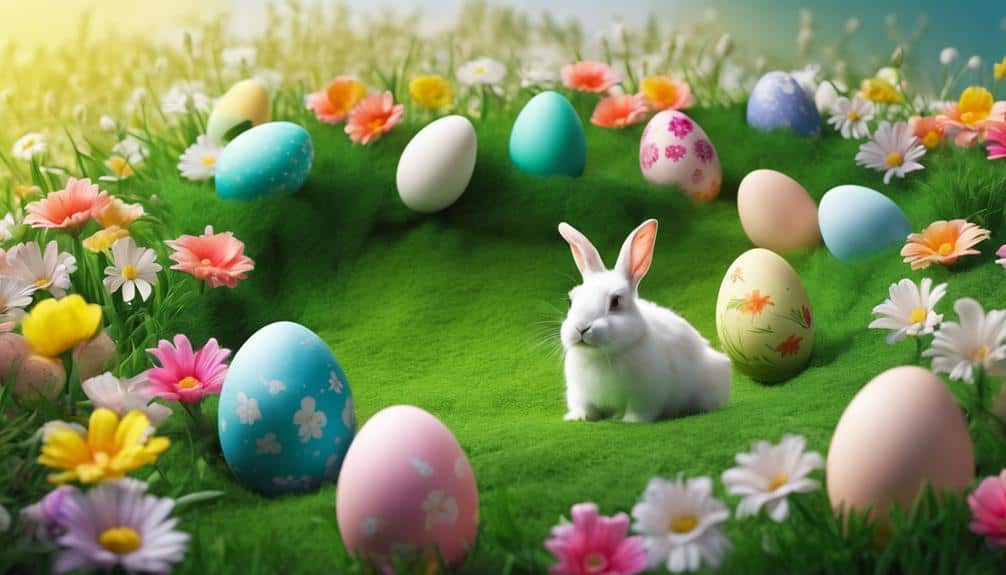
The significance of bunnies in Easter traditions lies in their symbolic representation of new life and the cyclical nature of growth and abundance.
The Easter bunny's association with fertility harkens back to ancient pagan celebrations of spring, where these creatures embodied the essence of hope and renewal.
Understanding the cultural origins and symbolism behind the Easter bunny sheds light on the profound meaning it holds in the tradition of celebrating life and rebirth during this festive season.
Easter Bunny Symbolism
Symbolizing fertility and rebirth in springtime celebrations, the Easter bunny holds a significant role in Easter traditions, embodying the essence of new life and the renewal of nature.
The Easter bunny's symbolism of fertility stems from ancient pagan rituals that honored the arrival of spring and the abundance of new beginnings. Bunnies, known for their prolific breeding habits, became a natural representation of fertility and abundance during this season.
The association between the Easter bunny and eggs further emphasizes the cycle of life and the promise of renewal that Easter brings. Through the playful image of a bunny delivering colorful eggs, the Easter tradition beautifully encapsulates the themes of growth, rejuvenation, and the everlasting cycle of life.
Cultural Origins
Cultural origins of the Easter bunny's significance in traditions reveal deep-rooted connections to seasonal symbolism, emphasizing themes of fertility and rebirth in various cultures worldwide. The Easter bunny's presence in Easter traditions carries profound meanings that echo across different societies:
- Bunnies symbolize prolific breeding habits and new life, aligning with the concept of vitality.
- The Easter bunny represents the rejuvenation and growth synonymous with spring.
- Through the ages, bunnies have embodied the cycle of life, growth, and revitalization.
- The association of bunnies with vitality underscores the seasonal allegory of birth, growth, and renewal.
- The cultural importance of bunnies in Easter traditions highlights themes of new beginnings and the continuous cycle of life.
Connection to Goddesses of Fertility
Connected to the ancient goddesses of fertility like Ostara and Eostre, bunnies embody the enduring symbolism of fertility and renewal in various cultural traditions. The Easter bunny's association with these goddesses underscores the deep-rooted belief in the interconnectedness between bunnies and fertility. In pre-Christian rituals, these goddesses were revered for their ability to bring about growth and abundance, aligning with the bunny's symbolism of new life and procreation.
The goddesses of fertility were central figures in ceremonies that celebrated the Earth's rejuvenation and the promise of a bountiful harvest. Bunnies, as symbols of fertility, mirrored the cyclical nature of life, symbolizing the constant process of renewal and regeneration. Their presence in rituals and myths highlighted the interconnectedness between the natural world and human life cycles.
Through their connection to goddesses of fertility, bunnies have become iconic representations of the enduring themes of rebirth and growth, transcending time and cultural boundaries to symbolize the eternal cycle of life.
Rebirth Symbolism in Various Cultures
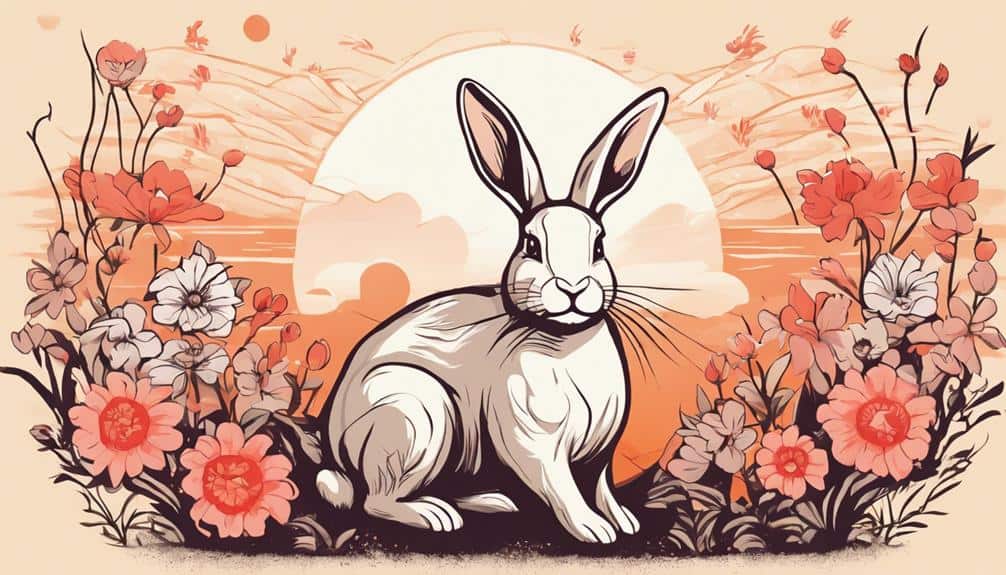
Relevant across diverse cultures, the symbolism of rebirth holds a prominent place in various traditions and belief systems worldwide. Here are some examples of rebirth symbolism in different cultures:
- In ancient Egypt, the hare symbolized rebirth and regeneration, reflecting the cycle of life and death.
- The Aztec goddess of fertility, Xochiquetzal, was commonly depicted with rabbits, signifying fertility and the renewal of life.
- Chinese folklore portrays the moon goddess Chang'e alongside a rabbit pounding a mortar, symbolizing immortality and rejuvenation.
- The Celtic goddess Eostre, linked to spring and fertility, had a hare as her companion, embodying the themes of renewal and growth.
- Hares have been associated with fertility and rebirth in various cultures worldwide, showcasing their symbolic significance in representing new beginnings and the continuity of life.
These diverse cultural representations highlight the universal appeal of rebirth symbolism, demonstrating its enduring presence in human beliefs and traditions.
Folklore and Superstitions Surrounding Bunnies
Bunnies, renowned for their prolific breeding habits, have long been intertwined with folklore and superstitions surrounding themes of fertility and rebirth.
In folklore, these creatures are often associated with fertility because of their exceptional ability to produce large litters of offspring.
Superstitions further link bunnies to rebirth as they're known to give birth to multiple litters in a single year, emphasizing the cycle of life and renewal.
The symbolic representation of renewal and new beginnings in various cultures stems from bunnies' rapid reproduction rate, which also ties them to the concept of life, death, and rebirth.
Throughout history, the idea of bunnies as symbols of fertility and rebirth has been deeply ingrained in ancient beliefs and traditions worldwide.
Their presence in folklore not only reflects their biological traits but also serves as a powerful symbol of the eternal cycles of life and nature.
Modern Interpretations and Pop Culture References
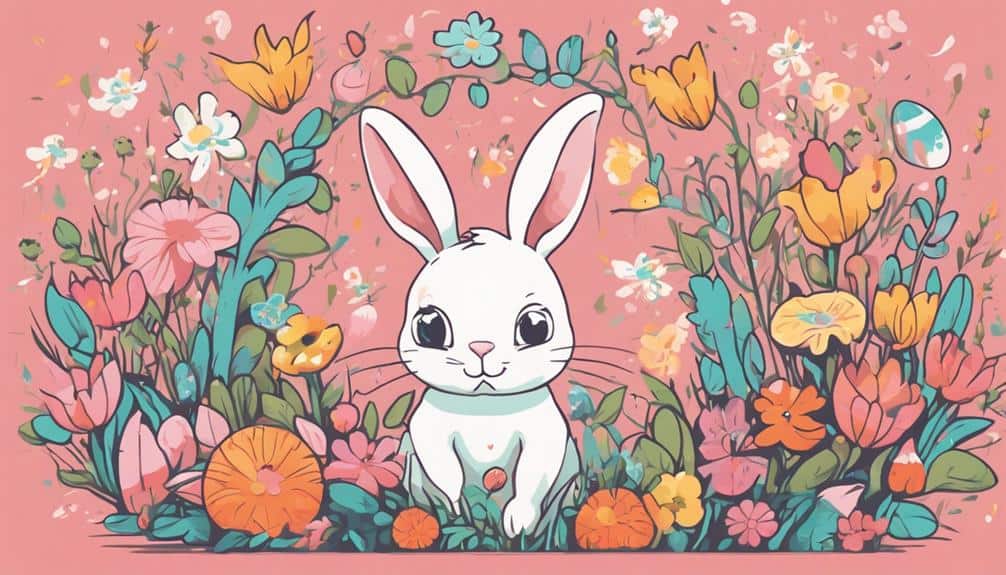
In contemporary culture, the enduring symbolism of bunnies as representations of fertility and renewal is prominently showcased through various mediums such as movies, literature, and advertising. The modern interpretations and pop culture references revolving around bunnies as symbols of fertility and new life are deeply ingrained in society:
- The Easter bunny tradition, with its roots in fertility celebrations, solidifies the association between bunnies and new beginnings.
- Bunnies frequently feature in movies and TV shows, often portraying themes of growth, regeneration, and the circle of life.
- Advertising campaigns often leverage the cute and playful image of bunnies to evoke feelings of freshness and essential in products.
- Merchandise, toys, and decorations featuring bunnies as symbols of fertility are popular choices, especially during springtime.
- Children's stories and cartoons commonly use bunnies to convey the message of new life, making them relatable symbols for young audiences to understand the concept of rebirth and growth.
Frequently Asked Questions
Why Do Rabbits Symbolize Fertility?
Rabbits symbolize fertility due to their rapid reproduction, seen in their behavior of having large litters. Cultural beliefs and animal mythology further reinforce this association, portraying bunnies as emblematic of new life and abundance.
Why Do We Associate Bunnies and Eggs With Easter?
You associate bunnies and eggs with Easter because of Easter traditions, bunny folklore, and egg symbolism. These symbols tie to themes of renewal, growth, and new life, reflecting the holiday's focus on resurrection and new beginnings.
What Is the Symbolism of a Bunny?
In various cultures, bunnies symbolize abundance, prosperity, and fertility. They embody hope and renewal, often seen in folklore and art. Their spiritual representations tie them to growth and the cycle of life, making them significant symbols.
What Does the Hare Symbolize in Fertility?
The hare symbolizes fertility in folklore traditions and cultural beliefs. Ancient symbolism ties hares to prolific breeding, renewal, and abundance. Their association with fertility goddesses and rites of spring reinforces their significance in representing new life and growth.
Conclusion
As you reflect on the symbolism of bunnies in fertility and rebirth, imagine the gentle hop of a bunny through a field of blooming flowers, embodying the cycle of life and the promise of new beginnings.
The image of a bunny, with its soft fur and bright eyes, reminds us of the beauty and wonder of nature's ability to renew itself, bringing hope and joy to all who witness its grace.

